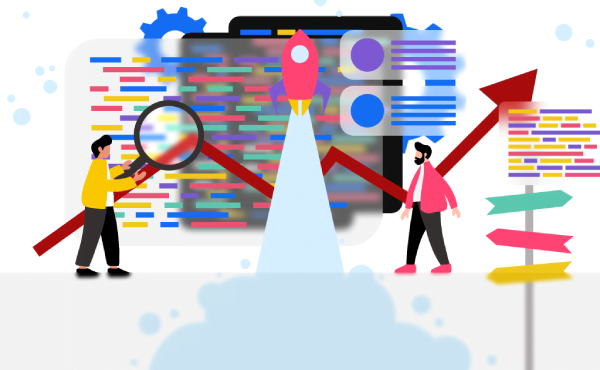A successful demonstration of Codex writing code from conversational commands.
The New York Times wrote an interesting article about Codex, an AI-based tool derivative of OpenAI, that can write code based on conversational instructions. This is some pretty impressive stuff to watch. However, OpenAI estimates that Codex is correct only 37% of the time and requires some human intervention or oversight to increase efficiency.
According to security experts who put GitHub’s Copilot through the wringer, they concluded “roughly 40 percent of the time, code generated by the programming assistant is, at best, buggy, and at worst, potentially vulnerable to attack,” according to The Register.
Granted, when given more attempts, Copilot improves its efficiency. In one example, it improved from 46.8% to 72.3% proficiency when given 10 through 100 attempts, respectively.
Copilot is an AI-powered code assistant tool which “autocompletes” code for developers as it ‘learns’ the business logic of the software. It, too, is based on OpenAI’s Codex. This technology is emerging from the DevAug manifesto. DevAug stands for Development Augmentation. It is a way to use artificial intelligence (AI) to enhance software development.
These few examples illustrate where we are today, however, envision in the next few years when AI software development will have 90% or even 100% proficient code.
AI & The Human Brain
We invited the opinions of professionals involved in the software development lifecycle on this topic. Meet software developer Marat Minulin, who offers some interesting touchpoints. “I suppose the inventions made in the field of machine learning and artificial intelligence will allow for delegating the algorithm and code writing to the computer.”
Minulin continues, “If the AI doesn’t progress as quickly as desired we can count on expanding the human brain’s capabilities. The latter sounds less convincing, but the recent achievements made by Elon Musk’s Neuralink Corp force us to believe the contrary. The company is engaged in developing a specialized device that can transmit brain signals via Bluetooth, which will make it possible to control a computer or a smartphone directly, with the aid of brainwaves. In February this year, Musk announced that his chip had been successfully implanted into an ape’s brain. With the use of that chip, it was able to play video games literally by the power of thought.”
Imagine this capability applied to software development. For example, a business developer or product manager having the ability to think of the application needed, and using a smart-chip assisted by AI builds the code…
Eliminating The Test Phase & AI Writing Code
In the near future, Autify is taking on the endeavor to completely eliminate the test phase in software development.
How you might ask? Fully autonomous testing in every stage of software development will ensure no bugs make it through production. Thus resulting in superior quality software products.
Therefore, in the examples previously mentioned, the evolution of tools like Copilot will not be dinged by headlines of forty percent inefficiency- or sixty percent proficiency (for optimists.) In our vision of future software development, testing will start as early as the design phase. Approaching the SDLC from this perspective allows for testing of business logic, coding, integrations, data, and systems from the beginning. Rather than towards the end of the lifecycle.
Imagine automation testing of the business logic to ensure no vulnerabilities will exist in the proposed software, rather than building feature sets that have the potential to fail for users. Now that the business logic layer is rock solid, artificial intelligence can literally write the majority (if not all) of the code for developers. The software engineer’s goal would be the oversight and review of written code. And as we train the machines to do more cognitive thinking, developers will need to shift towards learning how to effectively train AI.
Furthermore, AI can seek out vulnerabilities with integrations such as testing API integrations. Lastly, since AI and machine learning are superb at analyzing massive amounts of data, this is where they can become advantageous for offering insights or pointing out anomalies.
Here’s How We Advance To Superior Software Without The Test Phase
We believe that AI testing will replace the dedicated testing phase in the future. This is how we plan to disrupt the current software development life cycle:
(Phase 1) Increase Automation Coverage
We already provide a product that can automate a greater proportion of test cases that are currently being tested manually.
(Phase 2) Increase Overall Test Coverage
Currently, test coverage varies. We provide a product that increases the test coverage along with the automation percentage.
(Phase 3) Eliminate the Test Phase
The test phase is for verifying that all operations work as intended after development. If we can automate tests at the initial stage of development, development can be driven by tests. Once all tests pass, the software can be released without a separate test phase.
Automated testing at development stages cuts down on time and resources necessary for verification of operational performance during later phases like release or production. This saves both time and money in the long run by eliminating this work from future product cycles as well.
In Summary
Modern software development will continue to advance with artificial intelligence and machine learning leading its path. Is your company prepared to adapt and pivot with the industry? Do you think our ideas were far-fetched or spot-on? We would love to discuss more on social media or schedule a product demo– thus we can illustrate how these ideas are becoming reality!

